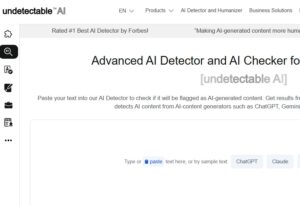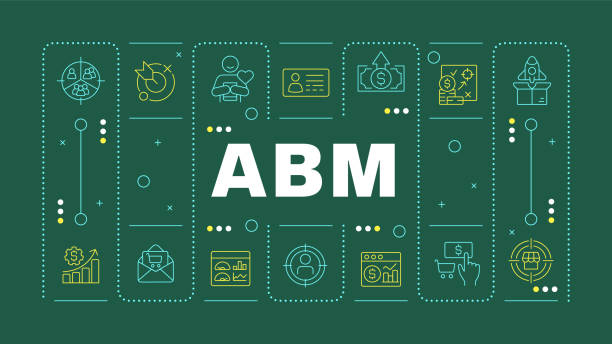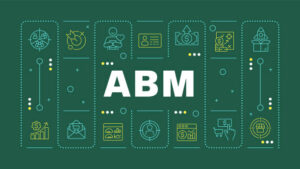In recent years, powerful generative AI tools like ChatGPT, Claude, and other large language models have revolutionized content creation. These platforms allow users to produce blog posts, academic essays, marketing copy, and social media content in minutes. However, this rise in AI-generated content has triggered growing concerns about authenticity, originality, and trust. As a result, advanced AI content detectors—such as GPTZero, ZeroGPT, and Copyleaks—have been developed to identify and flag AI-generated text.
For students, marketers, freelance writers, bloggers, or business owners, being flagged by these AI detectors can be a serious issue. Academic institutions may consider it plagiarism, search engines may reduce your SEO rankings, and clients might question the credibility of your work. These risks highlight the growing demand for tools that can effectively transform AI-generated content into natural, human-sounding language.
This is where undetectable AI tools play a crucial role. These tools are specifically designed to humanize AI text and ensure that your content remains undetectable by AI detection systems. Whether you’re using AI for academic writing, digital marketing, client work, or content publishing, undetectable AI solutions help maintain originality while keeping your work safe from detection. By applying intelligent paraphrasing, structure adjustments, and tone improvements, they allow you to confidently use AI assistance without compromising trust, compliance, or user engagement.
Why AI Content Gets Detected
Despite the sophistication of AI tools like ChatGPT and Claude, most AI-generated content still follows certain recognizable patterns that make it detectable. AI detectors like GPTZero, ZeroGPT, and Copyleaks are trained to identify these specific traits—making it increasingly important to understand why AI-generated content is flagged in the first place. Tools like Gumloop and Zapier AI can also help in streamlining how AI-generated workflows are structured, especially when optimizing content processes for humanization and automation.
- Predictable Sentence Structures:
AI tends to produce content with overly consistent sentence patterns. The rhythm and length of sentences often follow a logical, uniform flow that lacks the variability typically found in human writing. This predictability makes it easy for detection tools to spot machine-written content. - Uniform Tone and Repetitive Vocabulary:
One major giveaway is the use of a flat or monotonous tone. AI-generated text usually lacks the natural fluctuation in voice, style, or emotion that a human writer might inject based on context or audience. Additionally, AI often repeats similar words or phrases, especially when prompted to follow certain keyword guidelines—making the content sound robotic and impersonal. - Lack of Emotional Subtlety and Human Nuance:
Human writers use metaphors, humor, sarcasm, and emotional intelligence to connect with readers. AI often struggles with these subtleties. The result is text that feels technically accurate but emotionally detached—another red flag for AI detection systems. - Absence of Randomness and Natural Imperfections:
Ironically, imperfections such as typos, slight grammar variations, or inconsistent flow can make human writing more authentic. AI, on the other hand, produces overly polished and structured content that lacks the “messiness” of natural writing. This flawlessness often becomes a trigger for detection.
Because AI detectors are specifically trained to recognize these patterns, simply paraphrasing the content isn’t enough. To truly make your content AI undetectable, it must be humanized at a deeper level. This involves altering sentence rhythm, introducing stylistic variation, embedding emotional nuance, and even adding minor imperfections to mimic real human expression. These efforts help transform the content from “machine-generated” to “human-authored” in both form and feel—allowing it to pass undetected.
What Is Undetectable AI?

Undetectable AI refers to a growing class of tools, platforms, and strategies designed to transform AI-generated text into content that appears completely human-written—especially when analyzed by advanced AI content detectors such as GPTZero, Copyleaks, and ZeroGPT. These solutions help you bypass detection algorithms without compromising the message, tone, or intent of your original content.
At its core, undetectable AI aims to make artificial content indistinguishable from human writing. Here’s what that process typically involves:
Retaining the Original Meaning
Undetectable AI platforms are built to preserve the core idea and intent behind your text. They don’t simply replace words with synonyms—they ensure that the context, accuracy, and message remain intact, so the content is still valuable and coherent. This method complements AI writing platforms like Jasper AI, which is popular for content generation, but may still require humanization for detection-proof publishing.
Altering Sentence Structure and Tone
AI-generated content often has a mechanical tone and follows repetitive sentence patterns. To humanize it, undetectable AI tools restructure sentences, vary the tone, and inject natural linguistic variation. This makes the text feel more organic and conversational—just like something written by a real person. You can pair this process with tools like Grammarly, which help detect overly formal language and offer tone adjustments, enhancing the naturalness of your writing.
Adding Natural Imperfections
One of the most important elements of making AI content undetectable is introducing the kind of imperfections that are typical in human writing. This includes occasional shifts in style, minor grammatical liberties, or slightly informal phrasing. These quirks make the content seem more natural to readers and harder for detectors to flag.
Boosting Engagement and Authenticity
Undetectable AI tools don’t just focus on tricking algorithms—they also work to enhance reader experience. By incorporating emotional nuance, storytelling, and rhetorical devices, they make content more relatable and engaging. This improved authenticity helps build trust with readers and search engines alike. When paired with SEO optimization tools like Surfer SEO, humanized content not only becomes undetectable but also performs better in search engine rankings due to improved structure, keyword alignment, and user-focused content strategies.
Today, many creators rely on free undetectable AI platforms or “humanize AI text undetectable” services to rewrite or optimize their content. These tools are especially useful for:
- Freelancers and marketers trying to meet client demands
- Students aiming to avoid AI detection in academic work
- Bloggers and affiliate marketers focused on SEO compliance
- Businesses looking to maintain professionalism in AI-assisted writing
As the web becomes more saturated with AI-generated content, using undetectable AI tools is not just about bypassing detectors—it’s about producing content that resonates, ranks, and reads like it’s crafted by a human.
Best Undetectable AI Tools (2025)
| Tool Name | Key Features & Notes |
| Monica AI | Affordable with one-click paraphrasing and basic AI bypassing. |
| Undetectable.AI | Strong humanization, SEO-ready output, bulk content rewriting support. |
| AI Humanizer by Smodin | Simple, effective rewriting; best for casual users and students. |
| WriteHuman | Offers “Detect + Rewrite” mode; useful for checking and editing in one step. |
| Quillbot + Manual Edits | Combines sentence-level control with AI assistance; ideal for nuanced rewriting. |
Top Use Cases for Undetectable AI
As AI-generated content becomes more widespread, undetectable AI tools are gaining popularity across multiple industries. These tools help content sound more natural, pass detection systems, and connect better with readers. Whether you’re looking to bypass AI content detectors or simply improve the quality of automated text, here are the key areas where undetectable AI is making a big impact:
- 1. Academic Writing: Students often rely on undetectable AI-free tools to polish essays, reports, theses, and research papers. These tools help ensure that content is not flagged by AI detection systems commonly used by educational institutions. By making the writing more human-like and less predictable, students can maintain academic integrity while using AI assistance more safely.
- Content Marketing: Marketers use undetectable AI to rewrite AI-generated blogs, sales pages, email campaigns, and product descriptions. Since search engines now value EEAT (Experience, Expertise, Authoritativeness, and Trustworthiness), using humanized content can help boost SEO rankings and user engagement. Content that feels real and authoritative performs better and avoids Google’s penalties.
- Social Media Posts: AI-generated captions or scripts can often feel stiff or robotic. Creators use undetectable AI tools to rewrite their content for platforms like Instagram, Twitter, TikTok, and LinkedIn. This helps maintain authenticity and improves emotional connection with followers, all while staying compliant with platform algorithms that may suppress obvious AI content.
- Business Communications: From emails and proposals to internal documentation and client presentations, businesses use undetectable AI tools to make their communication more professional yet personable. These tools help remove robotic tone, making the content easier to understand, more persuasive, and better aligned with the company’s voice.
- Creative Industries: Writers, screenwriters, and storytellers often start with AI-generated drafts but rely on undetectable AI platforms to add emotional nuance and originality. Whether it’s a short story, screenplay, or marketing script, making the content feel truly human helps elevate creativity and ensures the message resonates with the audience.By applying undetectable AI in these areas, users can create content that’s not only engaging and authentic but also invisible to even the most advanced AI detectors. These tools are essential for anyone aiming to blend the speed of AI with the credibility of human writing.
How to Make AI Text Undetectable
Making AI-generated content undetectable is not just about changing a few words—it’s about transforming the tone, flow, and structure to sound authentically human. Whether you’re working on a blog, academic paper, or social media post, following a step-by-step process ensures your text can bypass most AI detectors while still sounding natural and engaging.
Step 1: Generate the Base Content Using AI
Start by creating your initial draft using a generative AI tool like ChatGPT, Claude, Google Gemini, or Bard. These tools are great for producing ideas, outlines, and base-level content quickly. However, remember that the output is often formulaic and detectable by AI scanners in its raw form.
Step 2: Humanize the Text with Undetectable AI Tools or Manual Edits
Next, run your content through a trusted undetectable AI platform—such as tools that humanize AI text for free—or manually edit it yourself. The goal is to adjust sentence structure, vary vocabulary, introduce natural flow, and add emotional nuances. Manual techniques include shortening or lengthening sentences, breaking repetition, and injecting personal or contextual details.
Step 3: Run the Text Through AI Detection Tools
Once the content feels more human, test it using AI content detectors like GPTZero, ZeroGPT, Writer.com’s AI Detector, or Copyleaks. These tools analyze your text for signs of machine generation. Aim for a low detection score or, ideally, a “likely human” result.
Step 4: Refine and Polish the Content
If your detection score is still high, go back and tweak areas flagged as suspicious. This could mean changing sentence openers, restructuring long paragraphs, or adding stylistic variation. Rerun the text through the detector after every significant change to monitor improvement.
Optional Editing Tools to Boost Authenticity
To enhance clarity, tone, and natural writing flow, use editing tools like
- Grammarly—for fixing grammar, tone, and clarity issues
- Hemingway Editor – for readability and sentence variety
- QuillBot—to paraphrase or rephrase content intelligently
- Wordtune—for improving sentence style and expression
By combining AI creativity with human editing and detection feedback, you can consistently produce content that’s indistinguishable from human writing—and safe for publishing across any platform.
Best Free Undetectable AI Tools
These tools are designed to help make AI-generated content undetectable by AI detectors. Whether you’re editing for academic, marketing, or business purposes, using these platforms—especially when combined with manual edits—can improve your content’s authenticity and effectiveness.
| Tool Name | Key Features & Notes |
|---|---|
| Monica AI | One-click paraphrasing that helps bypass AI detection systems. Completely free. |
| Undetectable.AI | Advanced AI rewriting that both paraphrases and humanizes. Freemium model. |
| AI Humanizer by Smodin | Offers basic rewriting focused on adding a more natural, human tone. Free version. |
| WriteHuman | Includes both detection check and humanization options. Free trial available. |
| QuillBot + Manual Edits | Allows sentence-level control for deeper customization. Free and paid plans are available. |
Pro Tip: These tools perform best when used alongside manual rewriting to add emotional nuance, tone variety, and structure changes.
How Detection Tools Like GPTZero Work
AI detection systems like GPTZero, ZeroGPT, and Copyleaks are designed to identify patterns that reveal whether a piece of content was written by a human or generated by artificial intelligence. These tools use advanced algorithms to assess specific linguistic and structural elements in your content. Understanding how they work is key to making your AI text undetectable.
The Core Elements AI Detectors Analyze:
- Perplexity
Measures how predictable a sentence is. AI-generated content tends to follow rigid, expected sentence structures, resulting in low perplexity. Human writing introduces natural complexity and variation. - Burstiness
Refers to the variation in sentence lengths and structures. Human writers typically mix short and long sentences for natural flow, while AI tends to keep things uniform. Low burstiness = higher AI detection risk. - Word Patterns & Repetition
AI often reuses similar phrases or sentence openers. Detectors track this repetition, flagging content that lacks lexical diversity. - Emotion and Tone Markers
AI struggles with subtle emotional cues, sarcasm, idioms, or nuanced opinions. A lack of emotional depth often signals automated writing.
Simple Example:
- Original AI Text:
“The solar panel works efficiently.” - Humanized Version:
“You’ll be surprised how effectively this solar panel performs, even in low light.”
This revised sentence introduces a natural tone, slight emotion (“you’ll be surprised”), and a more complex structure—elements that reduce detectability.
Undetectable.AI Pricing

| Plan Type | Details |
|---|---|
| Free Plan | Access to basic rewriting features with limited word count per day. |
| Yearly Plan | $5/month – Up to 10,000 words/month, basic humanization tools. |
| Monthly | $19/month – Up to 20,000 words/month, advanced detection bypass. |
| Pay-as-you-go | Custom pricing based on word volume, suited for agencies or bulk content. |
Ethical Use of Humanized AI Content
While the ability to humanize AI-generated content and make it undetectable can be incredibly powerful, it must be used with responsibility. The line between smart content optimization and unethical use is thin—and crossing it can damage credibility, violate trust, and even result in penalties from search engines, academic institutions, or online platforms.
What You Should Not Use Undetectable AI For:
- Plagiarizing Academic Work
Passing off humanized AI-generated essays, research papers, or assignments as original student work is unethical and may violate university honor codes. - Deceiving or Misleading Readers
Using undetectable AI to present biased, manipulated, or factually incorrect information without disclosure can harm public trust—especially in journalism or health-related content. - Bypassing Platform or Content Policies
Social platforms, freelance marketplaces, and search engines like Google have guidelines in place to detect and discourage low-quality or AI-spun content. Using humanized AI content to sidestep these rules may result in bans, suspensions, or loss of monetization.
Always Follow Ethical Best Practices:
- Be transparent when required (e.g., sponsored content or academic disclosures).
- Use humanization tools to enhance readability and engagement, not to deceive.
- Treat AI as a supporting tool, not a shortcut to bypass integrity.
Using undetectable AI content ethically means prioritizing honesty, value, and originality—the same qualities that build lasting trust with readers, clients, and platforms.
Tips to Bypass AI Detectors Effectively
To make AI-generated content more human-like and bypass detection tools, you need more than just paraphrasing. Here are key techniques that work:
Use a mix of sentence lengths. Varying between long and short sentences adds natural rhythm and reduces predictability, which AI detectors often flag.
Add human-style expressions and emotional tones. Include phrases that reflect curiosity, excitement, or personal judgment to give your content a more genuine feel.
Avoid robotic transitions. Phrases like “Therefore,” “In conclusion,” or “Hence” can sound formulaic. Instead, use more conversational connectors like “That’s why,” “Here’s the thing,” or “What this means is.”
Introduce rhetorical or open-ended questions. Asking questions like “Have you ever noticed…?” or “What would you do in this situation?” helps simulate human reasoning and creativity.
Rewrite sections with personal experience or stories. When appropriate, share brief anecdotes or insights as if you’re talking to a real person. This adds unpredictability and emotion that AI often lacks.
Use Grammarly’s tone checker. This tool helps adjust emotional tone, voice variation, and clarity, all of which can increase the “human-like” nature of your text.
By applying these strategies, you can transform AI-generated content into something that not only passes AI detectors but also resonates more deeply with real readers.
Final Thoughts
Undetectable AI tools are transforming the way we create and refine AI-generated content. As platforms like ChatGPT, Claude, and others continue to power fast content creation, the challenge of AI detection becomes more pressing. That’s where these tools step in—not just to bypass detection systems, but to elevate the quality of writing itself.
Whether you’re a student polishing an essay, a marketer enhancing blog content, or a business professional working on emails or proposals, the goal is the same: create text that feels naturally human. This means more than just paraphrasing—it involves adding emotional nuance, varying sentence structure, using natural phrasing, and ensuring the content engages real people.
When used responsibly and ethically, undetectable AI platforms, combined with manual editing and tone-enhancing tools like Grammarly or Wordtune, can help you craft content that reads smoothly, connects with your audience, and performs well in search rankings.
Remember, the future of content isn’t about hiding AI—it’s about blending its efficiency with the authenticity of human touch.
FAQs About Undetectable AI
- What is undetectable AI content?
“Undetectable AI content” refers to text that has been generated using artificial intelligence but rewritten or modified in a way that avoids detection by AI content detectors like GPTZero, ZeroGPT, and Copyleaks. This type of content retains the original meaning while adjusting tone, sentence structure, vocabulary, and emotional subtlety to make it appear naturally human-written. These modifications reduce the chances of being flagged as AI-generated, especially in academic, professional, or SEO-sensitive environments. - Why do AI detectors like GPTZero flag content?
AI detectors are trained to identify specific patterns common in machine-generated text. They analyze elements such as perplexity (how predictable the text is), burstiness (variation in sentence structure), repetitive phrases, and lack of emotional nuance. If a piece of content is too consistent or too polished, it raises red flags. That’s why making text more natural and varied—by introducing slight imperfections, emotional cues, and diverse syntax—helps reduce detection. - Is using undetectable AI tools considered plagiarism?
Not necessarily, but it depends on how you use the tools. If you generate content using AI and then rewrite it using undetectable AI tools without disclosing the source, especially for academic or copyrighted work, it can be considered plagiarism. However, for content marketing, blogging, or creative writing, these tools are often used to improve readability and engagement. It’s important to use undetectable AI ethically and in line with the rules of the platform or institution you’re writing for. - Are there any free undetectable AI tools available?
Yes, several free or freemium undetectable AI tools exist in 2025, including:
- Monica AI – One-click paraphrasing with AI detection bypass
- Undetectable. AI—Combines paraphrasing with human-like rewriting
- Smodin’s AI Humanizer – Basic tone adjustments for natural flow
- WriteHuman—Offers both detection and humanizing modes
- QuillBot (with manual edits)—Great for detailed sentence-level changes
These tools work best when combined with manual editing to ensure quality and originality.
- How do I make AI-generated text undetectable manually?
To manually make AI text undetectable, follow these steps:
- Rewrite sentences to vary length and structure
- Add emotional depth or personal experience
- Use conversational transitions instead of robotic phrases.
- Replace repetitive vocabulary with diverse synonyms
- Ask rhetorical or open-ended questions.
- Break up uniform paragraphs with bullet points or natural pauses.
This approach helps the content feel authentic while reducing its detection risk.
- Can undetectable AI improve SEO performance?
Yes, undetectable AI can improve SEO when used correctly. AI tools can generate keyword-rich content, but it often lacks engagement or emotional appeal. By humanizing this content, you make it more readable, relatable, and valuable, which boosts dwell time, reduces bounce rates, and increases content trust—all essential for higher Google rankings. Make sure to maintain natural keyword placement, use relevant subheadings, and optimize for user intent. - Is it safe to use undetectable AI content for blog posts and websites?
Absolutely—if done ethically and properly edited. When used to enhance readability, inject personality, and reduce robotic language, undetectable AI content is not only safe but also often more effective than raw AI output. However, always ensure your content provides value, adheres to Google’s EEAT guidelines, and does not mislead readers about the origin of the information. - What’s the best way to combine AI tools for undetectable content?
The best method is to follow a hybrid workflow:
- Generate the base content using ChatGPT, Claude, or another AI.
- Run the text through an undetectable AI tool like WriteHuman or Undetectable AI.
- Edit manually to introduce emotional tone, improve flow, and diversify language.
- Check the final version with AI detection tools such as GPTZero or Copyleaks.
- Polish with Grammarly or Hemingway for tone, grammar, and readability.
This combination ensures your content reads like it was written by a real person while maintaining SEO value.










